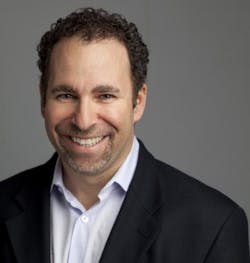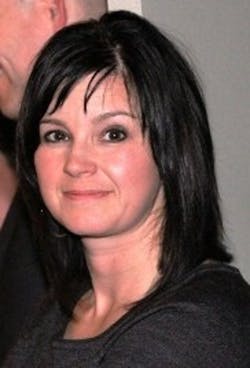Each year, to accompany our Healthcare Informatics 100 list of the largest companies in U.S. health information technology, we profile fast-growing companies that could very well make the list in the future. Below are write-ups of the final two companies that made this year’s Up-and-Comers rendition. The write-ups of the other four companies can be read here and here.
New Executive Team Leads Telehealth Company MDLive as It Enters ‘Hyper-Growth Mode’
As health systems and payers continue to embrace telehealth for both high- and low-acuity care, the vendors that have been laying the groundwork over the last decade are in a position to benefit from their experience. One of those vendors is MDLive, which provides 24x7 care in all 50 states and is one of the largest providers of telehealth care in the nation.
In 2017, MDLive’s membership more than doubled to nearly 25 million members, with a 43-percent increase in visits on its cloud-based platform.
“The company was started with a vision of how to create the largest virtual medical care medical group in the nation, and how to provide excellent care to as many people as possible at a time when there is a demand/supply mismatch,” says Lyle Berkowitz, M.D., chief medical officer and executive vice president of product strategy, who came to MDLive in 2018 from his position as director of innovation at Northwestern Medicine. The Sunrise, Fla.-based company also has a new CEO, former Allscripts executive Rich Berner.
Lyle Berkowitz, M.D.
Berkowitz and Berner plan to build on MDLive’s success. “My vision and Rich’s are similar,” Berkowitz explains. “The model is not simply virtualizing care, because that is not as scalable as it needs to be to solve all the demand we have. We are looking at how we automate and virtualize and optimize the whole care experience using a combination of people, processes and technology to take care of millions of people in a way that makes most sense to them.” He says MDLive can act as the front door, and triage to a higher level of care if need be. “Patients are highly satisfied, and doctors are happy,” he adds.
MDLive also helps health systems by treating people who would have ignored their care until they got so sick that they needed the emergency room or they might have gone to the ER unnecessarily, which clogs up the system, Berkowitz says. “In an era when we have primary care and emergency room access issues, the more we can take routine and repeatable care and figure out how to offer it in a highly configurable fashion, everybody wins,” he says.
Launched in 2009, MDLive partnered with large health plans such as Humana and it has received $73 million in funding from investors. “That provided the breadth and scale to build a continually improving product instead of going door to door to sell to every physician office,” Berkowitz says. The company also started working with employers and in the last two years it began expanding its health system customer base too.
Consumer demand is also a strong driver. Many people are surprised to learn they have some kind of insurance coverage for telehealth. “Once they are aware, they start using it,” he says. Upwards of 40 percent of visits are repeat patients.
Berkowitz says that health plans have really embraced telehealth. “Initially they were scared of telehealth because they were worried about extra cost, but they found it decreases ER utilization and increases savings.”
While the growth in 2017 was impressive, Berkowitz says the potential is even greater. “In the first quarter of 2018 compared to 2017, there was more than a 100-percent increase year-over-year in visits. We are in hyper-growth mode right now, and there is a lot of room to grow.”
Acquisitions, Organic Growth Extend Reach of OCHIN’s Health IT Services, Research
It might seem unusual for Healthcare Informatics to include a nonprofit organization on its annual list of Up-and-Comer companies, but OCHIN Inc. is no ordinary nonprofit health IT services provider. Founded in 2000 to provide EHR support services to federally qualified health centers (FQHCs) in Oregon, the organization now serves 450 organizations with more than 10,000 clinicians across the nation. In 2017 it had revenue of $59 million, up 35 percent from 2016. Its workforce grew 20 percent to 382 people.
The division that offers Epic hosting and support for community health providers has grown to 23 states and is negotiating contracts in new states including New York, South Carolina and Louisiana. “We could add another five states to that in the next 12 to 18 months,” says CEO Abby Sears, who has been with Portland-based OCHIN since its inception.
Sears explains how the organization ramped up over the years. After OCHIN began deploying a hosted Epic implementation for five FQHCs, its executives realized they had to scale it up to spread the cost across more providers. It started getting requests from providers in other states and began growing. “We grew really fast starting in 2009 and 2010 with the HITECH Act, and Affordable Care Act,” she says. “We really took off in 2010 and on average we have seen a 24-percent growth rate, year after year,” she says.
Abby Sears
Over the years, OCHIN has added professional services offerings such as billing, practice facilitation coaching, compliance and risk assessment, and evaluation services.
After previously buying the Oregon Health Network, last year OCHIN acquired the California Telehealth Network (CTN). Sears says those organizations are useful to OCHIN because its customers are on hosted platforms for EHRs. The telehealth organizations help provide the subsidies for medical-grade networks, crucial for reliability. CTN also hosts a telehealth policy resource center. “That complements where the industry is going and was an area where we didn’t have a lot of resources, so we wanted to bring that in house,” Sears explains. “It is an important part of where we needed to go. Some of our clinics are in very rural areas.”
Research has always been part of OCHIN’s mission. Its advance research data warehouse grew by 540,000 patients in 2017 and it has more than 40 employees in its research division. It received $8.3 million in research grant funding in 2017 and participates in the Patient Centered Outcome Research Institute (PCORI) as one of its clinical data repository networks.
In addition to the CTN, OCHIN also added a NextGen offering in 2017 by integrating two health IT services companies, Voxent and PTSO.
So has OCHIN’s rapid growth made Sears’ job more challenging? “It does add some complexity,” she says. “We are growing so much we have a hard time recruiting people who understand and have the same mission-driven approach to delivery that we do.” In regard to the organizations it has acquired, the real challenge was looking at the business model of all three organizations and redesigning them to be more value-added for the customers OCHIN serves, which also meant renegotiating contracts. In most cases, those customers got more services than before at a lower price, Sears says. “With the growth, we were able to redesign and reduce administrative overhead and leverage that back into pricing. That was a risky thing to do for a nonprofit, but it was important to stabilize the customers.”
There is no sign of OCHIN slowing down. Because both OCHIN and the recently acquired PTSO had roots in the federal Health Resources & Services Administration (HRSA), they still qualify as a “health center controlled network.” What does that mean? “It means we can apply for and get additional funding that focuses on outcomes work,” Sears explains. “We do technology assistance, project work and innovation work around driving outcomes with clinics.”




